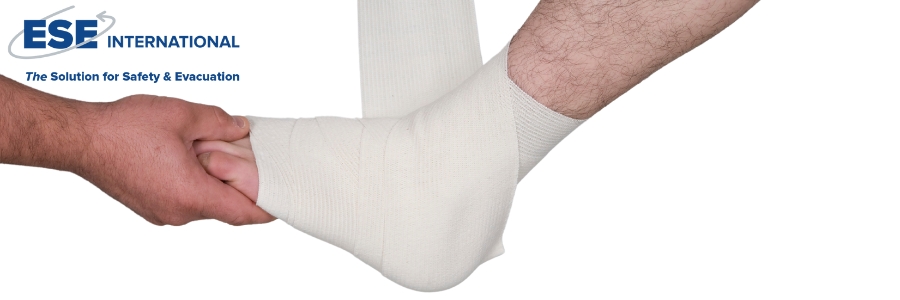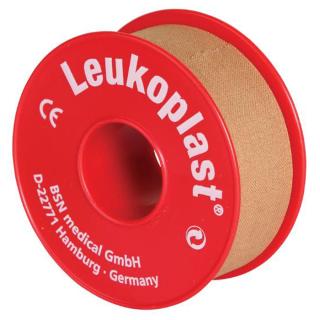A pressure bandage is a commonly used bandage in first aid and emergency response, it is used to treat various types of injuries. In this article we explain what a pressure bandage is, what its purpose is, how to apply a pressure bandage and how long it may remain in place.
What is a pressure bandage?
A pressure bandage is a type of bandage used to apply pressure to a wound or injury (bruises, sprains and strains). This bandage usually consists of multiple layers, including cotton wool and an elastic bandage. These apply pressure to the wound, bruise or sprain. The combination of materials ensures that a pressure bandage can effectively stop bleeding and provide support for sprains, strains or bruises. When a pressure bandage is used on wounds with bleeding, it is called a wound pressure bandage.
What is the purpose of a pressure bandage?
The purpose of a pressure bandage is to differ per situation. The different situations in which a pressure bandage serves as an aid are:
Bleeding: A pressure bandage can help stop severe bleeding by applying pressure to the wound, reducing bleeding and helping the wound heal faster.
Sprains and Strains: In the case of a sprain or strain, a compression bandage helps to reduce swelling and stabilize the site of the sprain or strain. This prevents further damage and reduces pain.
Bruises: A pressure bandage can also be used on bruises to reduce pain and swelling by applying even pressure to the bruised area.
What do you need to apply a pressure bandage?
To apply a pressure bandage you will need the following materials:
• Bandage scissors
• Cotton wool
• Elastic hydrophilic bandage
• Adhesive plasters
Applying a pressure bandage, this is how you do it!
Applying a pressure bandage correctly is crucial to its effectiveness. Follow the steps below to apply a pressure bandage:
Preparation: Make sure your hands are clean and that you have all the necessary materials at hand, such as bandage scissors, cotton wool, an elastic bandage and adhesive plasters.
Applying the cotton wool: Place the cotton wool on and around the wound or injured area. This helps to evenly distribute the pressure on the wound, bruise, sprain or strain.
Applying the elastic hydrophilic bandage: Wrap the elastic bandage over the cotton wool. This bandage should be tight enough to apply pressure, but not so tight that it restricts circulation. Wrap the bandage in overlapping layers, starting from the area closest to the heart and working downward.
Checking the pressure: Make sure the pressure bandage fits well and that there are no signs of restricted circulation, such as discoloration or tingling in the limbs. Adjust the tension of the bandage if necessary.
How long should a pressure bandage remain in place?
Pressure bandages should usually not be left on for longer than 24 to 48 hours. It is important to check the bandage regularly for signs of impaired circulation or increasing pain. If in doubt, it is always wise to seek medical attention. If there is a serious injury, contact a doctor immediately or call 911.
Disclaimer:
The text has been checked by a first aid specialist from ESE International. The information in this article is for informational purposes only. Treatments should always be carried out by a trained first aid officer or specialist. In case of serious injuries, call 112 immediately or seek professional medical help.





